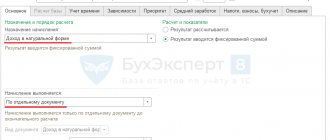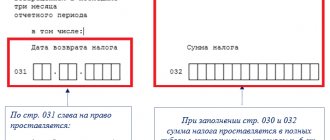Everyone knows the saying that personnel decides everything. Human resources are the most important part of any organization, which is why the availability and completeness of the information base about each employee is so important. The personnel service forms this information in the form of a special collection of documents - a personal file.
Since there is no special legislative regulation stipulating the procedure for creating and storing personal files, confusion and discrepancies in this matter are possible. We will try to clarify this area of maintaining personnel documentation.
Is it necessary to keep personal files?
Most entrepreneurs consider personal files an essential component of personnel documentation. However, the law states that this is only true for civil servants.
Personal files for government employees
Information about state and municipal employees must be systematized in the prescribed form (Decree of the President of the Russian Federation of May 30, 2005 No. 609). The personnel files of such employees are intended to reflect their entire track record so that it can be clearly seen how exactly their personal data has changed.
If an employee moves from one structure to another, his personal file must follow.
At a new place of work, it will be easier to form an impression of a new person, as well as obtain additional information about sources of income, connections, professional network, as well as other information that facilitates control.
Federal Law No. 79-FZ “On the State Civil Service of the Russian Federation” dated July 27, 2004, in Part 3 of Article 42, reveals the procedure for all actions with the personal files of this category of employees.
How to draw up an act of acceptance and transfer of the personal file of a municipal employee ?
Personal affairs of entrepreneurs
Neither the Labor Code nor other regulations of the Russian Federation contain a mandatory requirement to maintain personnel documentation exclusively through personal files created for each employee. Therefore, such registration of personnel data is not at all mandatory or even recommended.
IMPORTANT! The laws of the Russian Federation do not prohibit legal entities or individual entrepreneurs from maintaining personal affairs for their employees.
If the management of an organization or individual entrepreneur has decided to make it mandatory to fill out personal files, this must be enshrined in the accounting policy by prescribing the procedure in internal regulations. As a rule, it is the case that they use the regulations developed for civil servants.
Advantages of the personal affairs system for an entrepreneur
Despite the fact that no requirements define or limit the composition of a personal file and the procedure for maintaining it, the practice of this branch of office work shows the undoubted convenience for the manager of this form of storing personal information. It is for this reason that the ubiquity of personal files in the personnel service has formed the myth of their obligatory nature.
The positive effect of introducing personal personnel records is obvious:
- timely recording of all employee documentation;
- tracking career dynamics;
- recording data on possible benefits;
- assessment of prospects for professional growth;
- safety and orderliness of personal documentation;
- prompt access to the entire range of personnel information.
What is the procedure for conducting them?
The legislation does not directly indicate that every employer must create a personal file for an employee. Therefore, the management of organizations has the right to independently resolve this issue. But, at the same time, the law obliges to issue a personal card of the T-2 form for each hired employee.
After the mandatory use of unified forms was abolished in 2013, there has been controversy over whether the card is mandatory.
But, despite the abolition of unified forms, there are instructions in the legislation that confirm that the employer is obliged to maintain a T-2 card. In particular, according to the Rules for Maintaining Work Records, the employer is obliged to enter information about work into the employee’s personal card.
Video about managing personal files of employees:
Since the law does not provide information on the procedure for maintaining an employee’s personal file, it must be established by the employer himself. This procedure must be prescribed in one or more local regulatory documents of the organization. For example, in the instructions for office work.
Instructions for maintaining personal files of employees (PD) should regulate the following issues:
- what documents are included in the LD;
- who forms the LD;
- where folders with employee IDs should be stored.
If there are no instructions for office work, then the procedure for conducting personal affairs can simply be approved by a separate order for the organization.
If the enterprise has a personnel department or a personnel officer, then it is he who is charged with the responsibility of creating the personal files of employees.
A personal file continues to be formed throughout the entire period of a person’s work in a given organization.
Who do they file personal files against?
This question can be answered unequivocally only in relation to civil servants: for all, as required by law.
Since maintaining personal files is not necessary for private entrepreneurs, they themselves can decide which employees to keep this documentation for, and which ones can do without such detailed personnel records. Some managers who practice this system prefer to keep personal records for all personnel in order to systematize data for each employee. But some, in order to save time, organize the management of personal files only for certain categories of employees.
For employees of what positions are personal files usually opened?:
- management;
- deputy managers at various levels;
- key specialists;
- employees bearing financial responsibility;
- personnel reserve, etc.
FOR YOUR INFORMATION! It is advisable to open a personal file for such employees, regardless of the form and time of his employment - he works part-time or at his main job, under a fixed-term employment contract or on a permanent basis.
Less often, positions are provided with personal records for which educational, qualification or other special requirements are not provided, for example, cleaner, watchman, janitor, etc.
Deadlines for filing a personal file
As a rule, a personal file is opened for an employee for the first time after he has signed an order for his employment and has become familiar with this order.
The personal file is maintained, supplemented with documentation, and updated throughout the entire time the employee works for this employer. Unlike personal affairs in the public service, it is not customary for private entrepreneurs to disclose personal affairs when changing jobs. The relevance of a personal file lasts until it is transferred to the archive due to the dismissal of an employee.
Features of creating a personal file
Correct registration of personal files greatly facilitates the work with personnel documentation. Practice has developed a number of recommendations regarding the effective formation of personal files:
- Documents are collected under one cover, most often a folder, less often just a file or binder. They must be separate for each employee.
- It is not advisable to form cases thicker than 4 cm.
- Documents for permanent storage should not be mixed with temporary documents.
- The personal file may contain both original documents and their certified copies.
- It is preferable to replace important documents of permanent storage for personal files with copies.
- It is not customary to store several copies of the same document within one personal file.
- If the document contains attachments, they must be stored along with the relevant papers.
- Documents in the file should be arranged chronologically, that is, as they arise.
REMEMBER! The archives accept personal files for storage only in cardboard folders. Binders and files are not acceptable for this purpose and may only be for internal use.
What to do with the personal files of dismissed employees
After the employee is fired, information about the reasons for termination of the employment relationship (application and a copy of the order) is entered into his personal file, and the file itself must be sent for storage to the organization’s archives.
Shelf life
There are no specific retention periods for a personal file, but it is usually stored for a period of 75 years.
Conclusions about this storage period can be drawn based on the following provisions:
- The employee’s personal card must be kept for 75 years;
- all documents containing information about the employee’s work experience must be kept for 75 years.
The procedure for transferring to the archive
Before sending a personal file to the archive for storage, it must be properly completed:
- include an inventory of all documents that are in the personal file, in the order in which they are located. The inventory also indicates the number of sheets in the file;
- remove all documents from the folder and staple them, placing the inventory on the first page.
After this, the personal file is sent to the archive for storage.
What documents are included in a personal file?
The composition of personal files, as well as the procedure for formation, for private entrepreneurship is not fixed at the legislative level, but it must be properly prescribed in the local act of the company.
Documents that usually belong to a personal file can be divided into several groups:
- Primary documentation for hiring. This includes those documents that employees provide upon employment, and those that are filled out and entered directly during registration. It can be:
- summary;
- documents on education and qualifications;
- copies of identification documents (passport, SNILS, identification code, if any);
- recommendations or reviews from previous employers (if necessary);
- a document or a copy thereof regarding military registration (if available);
- certificate of no criminal record (needed when applying for certain positions);
- medical examination data;
- completed application form (if provided);
- employment application;
- a copy of the admission order;
- concluded employment contract, etc.
- Papers that appeared in the process of working in this position. They may reflect the employee's professional achievements or his social dynamics. These may include:
- various qualification certificates;
- driver license;
- marriage or divorce certificate, if these events occurred during employment;
- birth certificates of children (same justification);
- job description;
- additional agreements concluded (if this was done);
- a copy of the agreement on financial responsibility (if the position provides for it);
- certification certificates;
- data from regular medical examinations;
- documents establishing medical restrictions or disability (if this happened during work);
- copies of orders about internal changes in position (transfer, promotion, demotion, etc.);
- data on disciplinary sanctions and work incentives;
- leave requests;
- reports, explanatory notes, memos, etc.
- Documents confirming the employment relationship with this employer. Before the case is dismissed, it must be properly completed. The latest documents in the personal file folder may be:
- resignation letter;
- a copy of the dismissal order;
- documents on dismissal due to external transfer;
- employee's death certificate.
Receiving a photo from an employee for storage in a personal file is not considered processing of biometric personal data. After all, the personnel officer will not establish a person’s identity from a photo, this is just an element of the questionnaire. Therefore, obtaining a photo for these purposes is considered as processing (collection) of ordinary personal data, such as passport data, address, etc. Is it necessary to obtain consent for processing in this case? View answer
What are the nuances?
When creating personal files, the following nuances must be taken into account:
- they must be kept for each employee signed under an employment contract, regardless of the period of his work;
- if the same employee works in an organization in several positions, that is, he is registered under an internal part-time contract, a personal file is opened for each position;
- if an employee was fired and then hired again by this organization, then a personal file must be opened again;
- As a rule, the personal file contains copies of personal documents (in particular, a passport with a photo), so the HR officer must necessarily draw up an agreement with the employee for the processing of personal data;
Video - consent form for the processing of personal data:
- Personal files are not kept for employees registered under a civil contract.
- The work book is not kept in the personal file; a separate storage procedure is provided for it. But you can include a copy of it in it, this is especially true when work books are stored in a higher organization, and personal affairs are maintained in separate departments.
How to properly file a personal file
IMPORTANT! Recommendations for managing personal affairs from ConsultantPlus are available here
Business documentation should be maintained in accordance with generally accepted requirements, even if they are not enshrined in law, this increases the efficiency of its use. This responsibility is assigned by internal regulations to a specific employee, most often a representative of the enterprise’s personnel service.
His responsibilities are:
- initial establishment of a personal file;
- adding new records and documents to it;
- seizure of temporary storage documents that have expired or are no longer valid;
- if necessary, certification of copies;
- internal inventory of documents included in the case;
- scheduled check of the status of personal files;
- annual familiarization of the employee with his personal file against his signature;
- storage of files;
- placing irrelevant files in the archive.
IMPORTANT! An employee conducting personal affairs must have authorized access to personal data of employees.
Personal file cover
A personal file is a collection of a large number of documents, which dictates the necessity of some way to easily find the necessary information. It is customary to systematize information from a personal file on the title page (cover). It is convenient to use the requirements for cover design, which have remained unchanged since July 17, 1972 (GOST 17914-72):
- space is left on top for the future archival stamp;
- The full and abbreviated name of the organization is located at the top center;
- The structural unit is indicated below (you need to leave a few lines to reflect information about a possible change of department);
- case number (according to the nomenclature adopted by the company);
- last name, first name and patronymic of the employee against whom the case is being opened;
- the lower right corner carries information about the timing of the case: the opening date, that is, the day of hiring, and the closing date (dismissal order);
- The number of sheets in the file at the time of the inventory is written here;
- case retention period.
Description of the personal file
All documents that fall into that folder must be numbered and filed, and also take their place in the list of documents.
The list of documents in the personal file can be located on the inside of the cardboard cover of the folder or be filed last.
At the top of the sheet intended for this purpose, the name is written (“LIST of documents of the personal file”), then the employee’s full name is written in the nominative case. It is convenient to keep the inventory in the form of the following table.
| № | Index | date of issue | Heading | Number of case sheets | Date included | Note |
| Document serial number | According to internal nomenclature | Indicated by Arabic numerals | Document's name | Depending on the location in the case | Day of placement in personal file | Different marks, for example. original or copy. |
After the table, the number of documents and sheets included in the inventory is written in words and numbers. At the end there is the date of the inventory and the signature of the performer with a transcript.
What is an employee’s personal file?
The legislation states that the concept of “deed” means a special way of drawing up a document or a set of documents related to one issue or area of activity. In accordance with sub. 95 clause 3.2.2 GOST R 7.0.8-2013, these are documents placed in a personal file folder, that is, in a separate cover. There are no special regulations for maintaining (there are only for state and municipal employees). But if the company decides to conduct personal affairs, it will have to approve regulations on the conduct of personal affairs and regulate this process at the enterprise level. This internal regulation defines:
- what papers will be stored (composition) and for what purpose;
- order of conduct;
- list of employees for whom LD will be issued;
- procedure for access to information;
- terms and storage conditions;
- features of archiving or destruction after dismissal.
In addition, the company appoints an employee who is responsible for this process.
Managing personal affairs
The procedure for maintaining personnel documentation must be set out in detail in the relevant Regulations adopted by the company. It may provide for a number of accounting procedures:
- Registration. In large organizations, a special journal or book is created to record personal affairs. Each new case is entered into it under a certain number (code), the same sequence of numbers is affixed to the folder with the case itself. The journal may also contain the following information about a personal file:
- Full name of the employee;
- establishment date;
- closing date;
- date of transfer to the archive.
- Adjustment . It is necessary if, during the employment process, the employee’s personal data has undergone significant changes: place of residence, social status due to marriage or divorce, change of surname, etc. Changes are made based on the attachment of relevant documentary evidence (copies of marriage certificate, birth certificate, etc.). Only a responsible employee appointed by a special order, or another officially authorized to replace him, has the right to make changes.
- Storage. Since personal data is confidential information, folders must be stored so that they cannot be accessed by unauthorized persons. Typically a safe or locked cabinet is used for this purpose. Only files of active employees should be kept. After dismissal, the employer retains the case for some time (he sets this period himself; in the civil service, if the case is not transferred to another body, it is 10 years).
- Transfer to the archive. The case of the dismissed employee must be closed and, upon expiration of the internal savings period, transferred to archival storage. To transfer, you need to fill out a certification sheet , where final information about the state of your personal file is entered. This sheet is filed at the end of the folder. From the moment the file is transferred to the archive, it will be stored there for 75 years if it belonged to an ordinary employee, and permanently if it belonged to a manager.
NOTE! If an error, inaccuracy or consequence of a change is corrected, this should be done by analogy with work books: cross out the incorrect one with one line, write the correct version at the top, and in the margins put a note about the correctness of the correction and its date.
What form should be used to keep a log of personal files of employees ?
What is provided and why is it needed
The organization that maintains the personal files of employees, for the convenience of recording them, opens an appropriate journal.
This document is not provided for by any current regulatory act at the level of federal or even regional legislation, therefore the employer develops its form independently and approves it with his order or directive. The journal as such simplifies working with employees’ personal data, which is organized into subfolders:
- all information is systematized;
- finding it takes little time;
- convenient to use;
- an optimal level of protection of personal data from third parties is ensured;
- after all, it looks aesthetically pleasing.
As we have already said, this procedure for storing personal data is mainly used in the civil service, where it is mandatory. Therefore, the approach there is quite serious:
- documents for dismissed and current employees are stored separately from each other;
- As a rule, the storage of these documents is a separate room or isolated room;
- all papers and folders are placed in metal cabinets to prevent access by third parties;
- Only selected - specially appointed employees - have access to the premises or storage facility.
That's not all. To get acquainted with the contents of his file, and a civil servant is obliged to get acquainted with its contents at least once a year, a separate place is allocated; as a rule, it is located in a storage facility, but, depending on the footage and the capabilities of the organization, a separate room may be allocated.
This, as has already been said, for state companies and for all other organizations, the rules and storage procedure are established by the company’s management, but with one ironclad requirement prescribed by law - the personal data of employees must be protected, and no one is allowed to violate the confidentiality regime.
The journal of personal files of employees, a sample of which we have provided below, is used, as a rule, to record the fact that personal information from a particular case has been reviewed by a specific person and for a specific purpose. In general, for this purpose they use a familiarization card, which is actually stored, but the journal is more convenient to use for inspectors: you can immediately see how work is being done in this area of personnel records in the organization.






